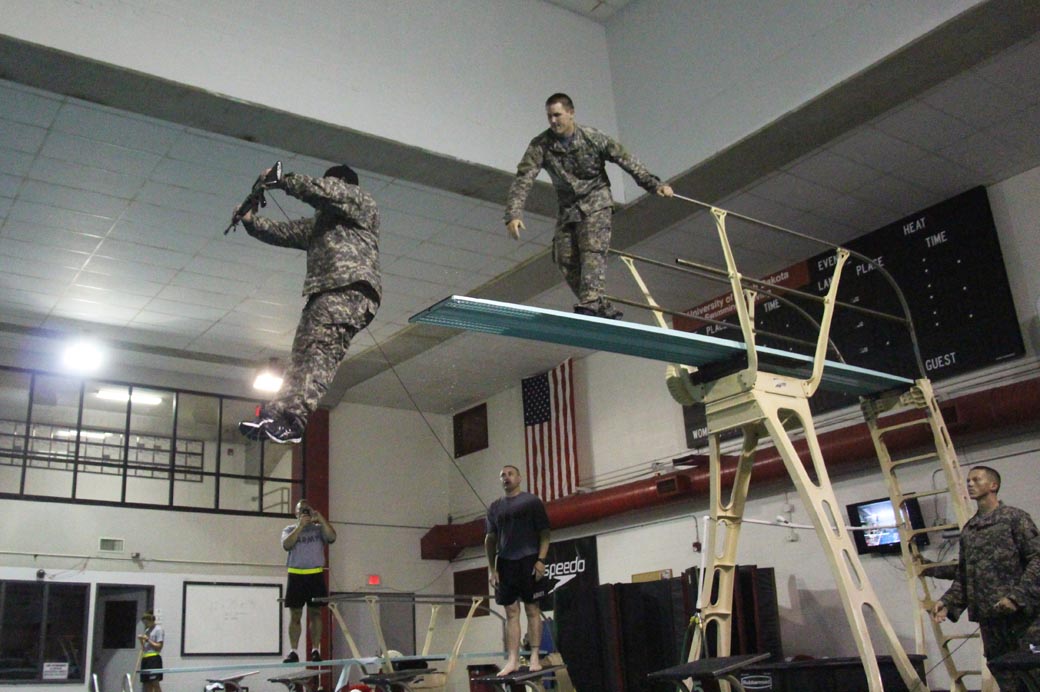
ROTC sees enrollment spike a year after program cancellation scare
After returning from the brink of cancellation, the University of South Dakota’s Reserve Officers Training Corps program is ushering in the largest class it’s seen in years.
Lt. Col. Ross Nelson, chair of the Military Science department, said this fall there are around 40 new students in the program compared to 2013. Last year, there were around 80 students involved in the program.
In October, the U.S. Army announced USD’s ROTC program would be cut. Nelson said the announcement came as a shock to the university and he didn’t realize the program was in danger of closing or what the criteria was for the program to remain open. The decision to close the program has since been reversed, and instead, the program will undergo a review process in March.
Jackson Yates, a senior and cadet in the program, has been organizing events and mentoring new cadets, which included helping one first-year who locked themselves out of their room.
“The numbers this semester go to show that the University of South Dakota is not done ROTC wise,” Yates said.
Had the program been cancelled, Yates would have had to travel to South Dakota State University for a day in order to graduate from the ROTC program. For students who had several years left at the university, they would have had to drop to program or transfer to a different university.
Since the jump in recruitment, the physical training platoon has split into two groups, increasing the number of leadership positions available for students.
As one of around a dozen students in Phi Kappa Theta, Yates has pushed for the two organizations to work together for upcoming events, including an event in early October where students will be timed running through an obstacle course while wearing drunk goggles.
By working with multiple student groups, Yates hopes to make the program more recognizable.
“What I’m trying to push there is cohesion between student organizations and ROTC,” he said.
While recruitment was the push for this semester, the focus will be on retention in the spring. Currently, some students contract with the Army, several are in the process of contracting and others take the 100 and 200 level Military Science courses just for the elective credit.
“We do pretty well with retention once cadets are contracted,” Nelson said.
Nelson said the current retention rate for students who take Military Science classes and who finish all four years of the program is around 50 percent, alongside the national average. Once students are contracted, more than 85 percent remain with the program at USD.
However, many scholarships and other incentives for enrolling in the program only last for the first semester.
“By the end of next semester, if we have the same numbers we have now, then that would be an accomplishment,” Yates said. “If those freshmen are still here, either I did something super right, or the program is doing something right. This fall is crucial in the sustainment effort.”
In recruiting new students, Nelson and Capt. David Larson, recruiting operation officer, have been stressing the program’s status.
“We are not closing and we are not on any kind of probation from the Army,” Nelson said.
Meanwhile, Larson is using his best recruitment tool, students, to help bring others into the program, organize events and hang recruitment information.
“I don’t know students as well as students know students,” Larson said.
Looking toward the spring review, Larson is confident the program will remain open.
“I don’t have any worries at this point,” Larson said.
The program has plans to collaborate with other student organizations and might start an intramural team.
(First-year DeVante Chamberlain participates in the three meter drop exercise during the University of South Dakota Reserved Officers Training Corps Combat Water Survival Testing event Septemeber 4 at the DakotaDome. Malachi Petersen | The Volante)

